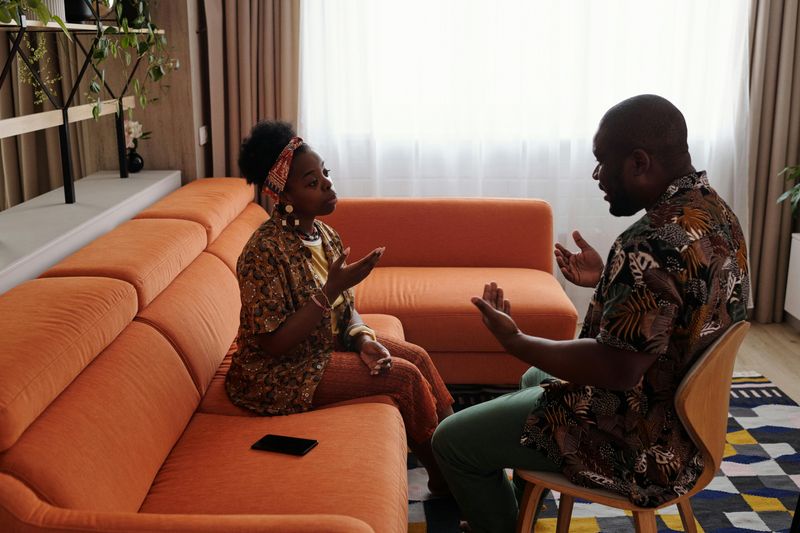11 Proven Ways to Calm Arguments and Restore Relationship Harmony Fast

Arguments happen in every relationship, but they don’t have to derail your connection. When tempers flare and emotions run high, having strategies to restore peace can make all the difference. Learning how to calm heated moments quickly isn’t just about avoiding conflict – it’s about building stronger bonds through better communication. These proven techniques will help you transform arguments into opportunities for understanding and growth.
1. Pause and Create Space

The simple act of pausing creates magical breathing room when emotions threaten to overwhelm you both. Taking a deep breath signals to your brain that you’re safe, activating your rational thinking instead of your fight-or-flight response.
This small gap between reaction and response can prevent hurtful words that might take days to heal. Count silently to ten if needed, allowing your shoulders to drop and your jaw to unclench.
Remember that slowing down doesn’t mean giving up or giving in – it means you value the relationship enough to approach the discussion with clarity rather than chaos.
2. Listen Without Interrupting

Genuine listening transforms arguments faster than almost anything else. When your partner speaks, resist the urge to formulate your comeback – instead, focus completely on understanding their perspective, even if you disagree.
Try nodding occasionally to show you’re present. Make eye contact that says “I hear you” rather than “I’m waiting for my turn.” This single skill often defuses tension because most people just want validation that their feelings matter.
The magic happens when both people feel truly heard – suddenly the problem feels solvable rather than a battle to be won.
3. Speak From Your Experience

“I feel worried when plans change suddenly” hits differently than “You always ruin our plans!” Notice how the first statement expresses feelings without accusation? That’s the power of “I” statements.
This approach creates a safe space for honest communication rather than triggering defensiveness. Share your emotions using words like concerned, frustrated, or confused instead of attacking with blame-loaded language.
The formula works wonders: “I feel (emotion) when (situation) because (reason).” This simple shift transforms potential relationship landmines into bridges of understanding that actually bring you closer together.
4. Own Your Part in the Conflict

Relationships dance to the rhythm of two people’s actions. Acknowledging your contribution to a problem instantly changes the argument’s energy from confrontation to collaboration.
Saying “I realize I didn’t communicate my expectations clearly” demonstrates emotional maturity that invites your partner to meet you halfway. This vulnerability creates a safe space for them to admit their role too.
The most powerful words sometimes are the simplest: “I’m sorry for my part in this.” No justifications needed. This genuine accountability builds trust because it shows you value the relationship more than being right.
5. Share Genuine Appreciation

Appreciation acts like relationship glue during conflicts. Even when upset, finding something positive to acknowledge about your partner reminds you both why you’re together in the first place.
“I appreciate how much you care about solving this” or “Thank you for being willing to talk this through” can transform the emotional temperature instantly. These moments of recognition create islands of connection in seas of disagreement.
The beauty lies in specificity – noticing particular efforts or qualities rather than generic praise. This sincere recognition helps your partner feel seen for their positive intentions, not just their mistakes.
6. Call a Thoughtful Time-Out

Sometimes the smartest move is hitting the pause button. Unlike storming off, a thoughtful time-out involves agreeing to separate briefly with a specific plan to return.
“I need 20 minutes to collect my thoughts. Can we continue this at 7:30?” This approach respects both people’s need for space while honoring the importance of resolution. During your break, focus on calming yourself rather than rehearsing arguments.
The key difference between helpful breaks and harmful ones? Intention and agreement. A mutual decision to pause with a clear return time prevents the anxiety of unresolved tension while giving your nervous systems the reset they desperately need.
7. Find the Funny Side Together

Laughter creates instant connection when used thoughtfully. A gentle joke about the situation (never about your partner) can pop tension bubbles and remind you both that you’re on the same team.
Self-deprecating humor works wonders: “I’m being as stubborn as that time I insisted I knew the way to the restaurant…” This invites smiles without making anyone the target. The key is timing – only use humor once emotions have settled enough for it to be received well.
Shared laughter releases oxytocin, the bonding hormone that literally brings you closer. It’s like pressing a relationship reset button that helps you remember why you chose each other.
8. Shift to Solution-Finding Mode

The moment you both start brainstorming solutions, you’ve already won half the battle. Moving from “who’s right” to “what works” transforms opponents into teammates tackling a shared challenge.
Try asking, “What would make this situation better for both of us?” This invites collaboration rather than competition. Write down ideas without judging them first – this creates a judgment-free zone that encourages creative thinking.
Solutions that incorporate both people’s needs tend to stick. The process itself builds connection as you witness each other’s willingness to find middle ground. This cooperative approach leaves both partners feeling respected rather than defeated.
9. Step Into Their Shoes

Empathy transforms conflicts faster than any clever argument ever could. Actively imagining how the situation feels from your partner’s perspective creates immediate connection, even during disagreements.
“It sounds like you felt dismissed when I changed our plans. That must have been frustrating.” This validation doesn’t mean you agree with everything – it means you recognize their emotions as legitimate.
Relationships thrive when both people feel understood. The magic happens when you can hold two truths simultaneously: your experience AND theirs. This emotional generosity creates the safety needed for real problem-solving to begin.
10. Choose to See Good Intentions

Chances are, your partner didn’t mean to hurt you—they just missed the mark. Choosing to believe in their good intentions can soften conflict and build a stronger bond.
Rather than thinking “they’re trying to control me,” try “they’re worried about my safety.” This perspective shift doesn’t excuse harmful behavior but creates space for understanding rather than defensiveness. The question “What might they have been trying to accomplish?” often reveals surprising insights.
This generous interpretation creates immediate emotional safety. Your partner will feel the difference between being seen as thoughtless versus being recognized as someone who cares but made a mistake.
11. Tackle Issues While They’re Small

In relationships, it’s often the little things that matter most. Taking time to talk about minor concerns can stop them from quietly turning into something much bigger.
Try the gentle approach: “I noticed something that’s bothering me a bit. Can we talk about it?” This opens conversation without creating defensiveness. Regular maintenance conversations prevent the need for major relationship repairs later.
The couples who thrive aren’t those who never have problems – they’re the ones who handle small issues promptly with kindness. This proactive approach creates a relationship where both people feel safe bringing up concerns before they become dealbreakers.

Comments
Loading…